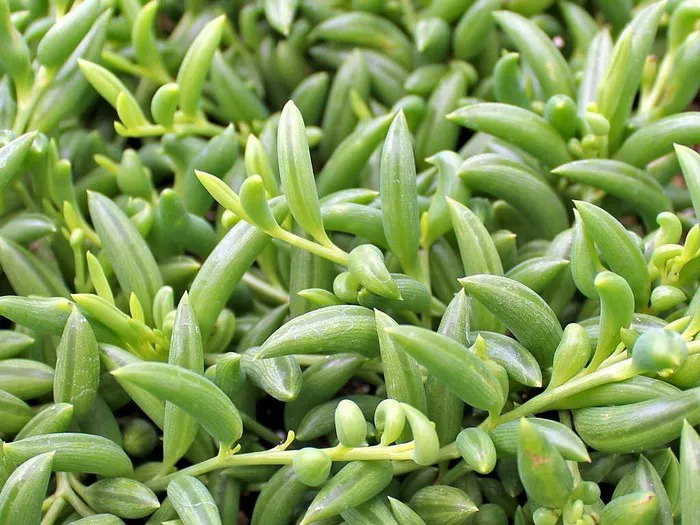Banana succulents, scientifically known as Musa spp., are a unique and fascinating addition to any plant enthusiast’s collection. With their striking appearance and relatively easy care requirements, they have gained popularity among indoor gardeners. Propagating banana succulents offers an exciting opportunity to expand your collection and share the beauty of these plants with others. In this comprehensive guide, we’ll explore various methods of propagating banana succulents, from division to stem cuttings, providing you with the knowledge and confidence to propagate these delightful plants successfully.
Understanding Banana Succulents
Before delving into propagation techniques, it’s essential to understand the basics of banana succulents. Unlike traditional bananas, which belong to the Musa genus, banana succulents are part of the Senecio genus, commonly referred to as “banana plants” due to their resemblance to bananas. These succulents are characterized by their fleshy, elongated leaves that grow in a spiral pattern, giving them a unique and eye-catching appearance.
Banana succulents thrive in well-draining soil and bright, indirect sunlight. They are native to arid regions of Africa, where they have adapted to survive in dry conditions by storing water in their leaves and stems. With proper care, banana succulents can grow rapidly, producing offsets that can be used for propagation.
Propagation Methods
1. Division:
Division is one of the simplest and most reliable methods of propagating banana succulents. This method involves separating offsets, or “pups,” from the parent plant and replanting them to establish new growth. Here’s how to propagate banana succulents through division:
- Carefully remove the parent plant from its pot, taking care not to damage the roots.
- Gently tease apart the offsets from the parent plant, ensuring that each pup has its own root system.
- Plant the offsets in individual pots filled with well-draining succulent soil.
- Water the newly potted offsets lightly and place them in a warm, brightly lit location.
- Monitor the soil moisture levels and adjust watering as needed to promote healthy growth.
2. Stem Cuttings:
Stem cuttings offer another effective method of propagating banana succulents, particularly when offsets are not readily available. This method involves taking cuttings from the stem of the parent plant and encouraging them to develop roots. Follow these steps to propagate banana succulents from stem cuttings:
- Using a clean, sharp knife or scissors, take a cutting from the stem of the parent plant, ensuring it is at least a few inches long.
- Allow the cutting to dry and callus over for a few days to reduce the risk of rotting.
- Once the cutting has callused, plant it in a pot filled with well-draining succulent soil, burying the cut end shallowly.
- Water the cutting lightly and place it in a warm, bright location away from direct sunlight.
- Keep the soil lightly moist and mist the cutting occasionally to maintain humidity levels.
3. Leaf Cuttings:
While less common, banana succulents can also be propagated from leaf cuttings, although this method can be more challenging and less reliable. Here’s how to propagate banana succulents from leaf cuttings:
- Select a healthy leaf from the parent plant and carefully remove it, ensuring that a small portion of the stem is attached.
- Allow the leaf cutting to dry and callus over for a few days.
- Plant the leaf cutting in well-draining succulent soil, burying the stem portion shallowly and ensuring the leaf makes contact with the soil.
- Water the cutting lightly and place it in a warm, bright location with indirect sunlight.
- Monitor the soil moisture levels and mist the cutting occasionally to maintain humidity.
Tips for Successful Propagation
- Provide Adequate Light: Banana succulents require bright, indirect sunlight to thrive. Place newly propagated plants in a location where they will receive plenty of natural light without being exposed to direct sunlight, which can cause sunburn.
- Use Well-Draining Soil: Ensure that the soil used for propagating banana succulents is well-draining to prevent waterlogged conditions, which can lead to root rot. A mix of succulent or cactus soil with perlite or sand works well to provide the necessary drainage.
- Monitor Moisture Levels: While it’s essential to keep the soil lightly moist during the propagation process, overwatering can be detrimental to newly propagated plants. Allow the soil to dry out slightly between waterings to prevent root rot.
- Maintain Humidity: Providing a slightly humid environment can encourage root development in propagated banana succulents. Mist the plants occasionally or place them in a humidity tray to increase moisture levels around the cuttings.
- Be Patient: Propagating banana succulents takes time and patience, as newly propagated plants may take several weeks to establish roots and begin producing new growth. Avoid the temptation to disturb the cuttings or pot them up too soon, as this can impede their progress.
Conclusion
Propagating banana succulents is a rewarding endeavor that allows you to expand your collection and share the beauty of these unique plants with others. Whether you choose to propagate through division, stem cuttings, or leaf cuttings, following proper techniques and providing the necessary care will increase your chances of success. With a little patience and attention to detail, you can enjoy watching your propagated banana succulents flourish and thrive in their new environment.


